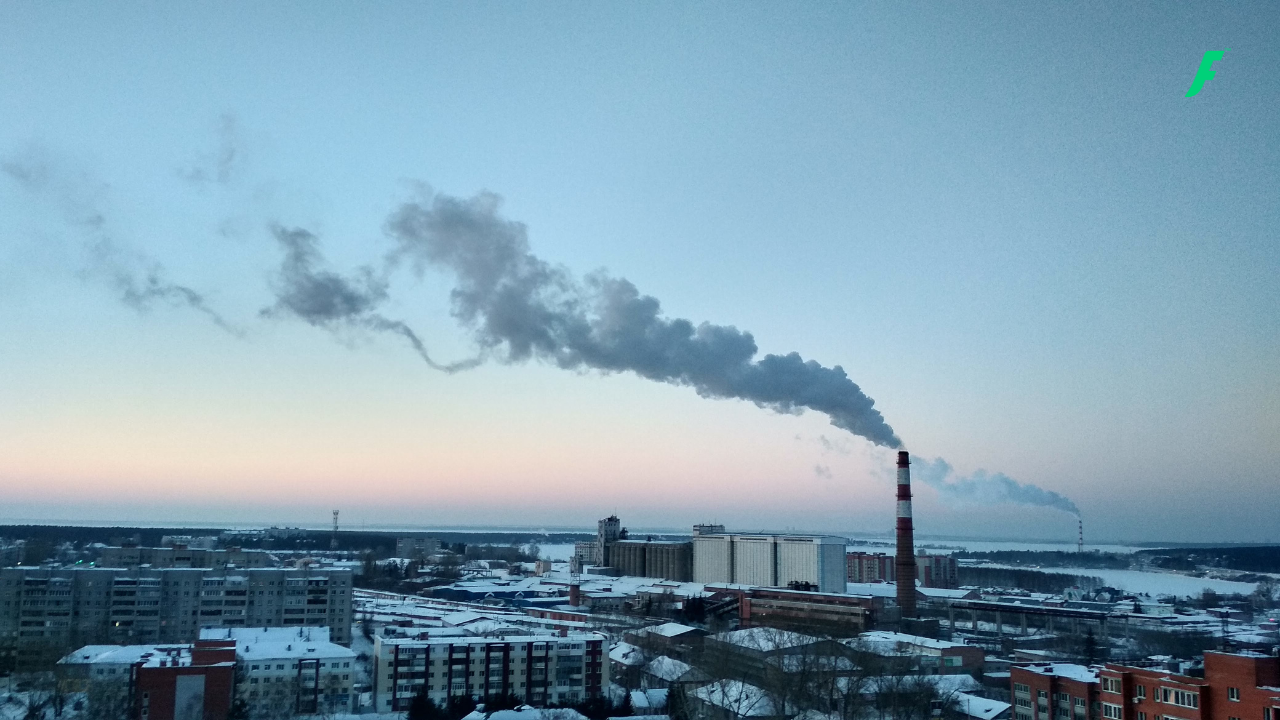Carbon Dioxide: the Boon turned Bane

Boon or Bane
The frigid ice has melted into warmth of green, time and again in the past. But the sporadic ice age of the past is not a good enough excuse to ignore the environmental mayhem we are in. ‘Climate crisis is man-made’ should not be up for debate any-longer.
Yes, natural factors do influence the earth’s climate, but the steep trend observed in the past century can not be pinned to only these factors. After the industrial revolution the uphill we have observed in the global average temperature is exceptional from the pattern observed before.
We could gather from the graph below (graph 1) that the climate does vary over a wide range of time scales. Changes in earth’s orbit or rotation, variations in solar absorptivity and reflectivity have been responsible for the famous cyclic ice ages. Not to mention the volcanic activities that has and yet continue to play a noticeable role in climate. They have emitted substantial quantity of heat trapping carbon dioxide in the atmosphere in the past.
Graph 1; Source: NOAA Climate.gov; Data: NCEI
The evidence study of tree rings, ice glacial, bubble of air etc, has helped scientists to build records on Earth’s past climate. Coined as “paleoclimate”, the records show inter-glacial periods even warmer than today. But to move out of ice age over the past million years, it took earth over 5000 years to experience a 4-degree Celsius rise in temperature.
Whereas, in the past century alone temperature has jumped a massive 0.7 degree Celsius. You see the blue dramatic rise in global temperatures in the graph below (graph 2) ? It is the proof of ten times faster than average rate of ice-age-recovering warming.
Graph 2; Source: NASA graph by Robert Simmon; Data: Jouzel et al., 2007.
Still don’t see anything unusual?
Let’s get to the technicality of rising temperatures then. Carbon dioxide played an important role in the advent of these interglacial periods in the past. These periods began with small increase in incoming sunlight resulting in little bit of a temperature rise. As the oceans warmed, the absorbed carbon dioxide escaped in the atmosphere with a fizz, amplifying the initial solar-driven warming.
Not that life was not diverse in the glacial periods, but the flora and fauna flourished impeccably in the contraire of glacial.
But these natural sinks — ocean and forests and soil; could only capture half of the carbon dioxide in the atmosphere each year in the decade of 2011–2020. The amount of carbon dioxide kept rising every year, so much so that it set a record high in 2021 with 414.72 parts per million. Astoundingly, through paleoclimate evidence, these ice ages scattered in past millions of years, never encountered atmospheric carbon dioxide over 300 ppm.
Still believe it’s all natural?
We reached 315 ppm of atmospheric carbon-dioxide in 1958 itself. The logical explanation can only be that the CO2 released in the atmosphere is more than it is being absorbed. This imbalance is obviously new.
The next question descending is that where did all that extra CO2 in the air come from? You guessed it right. Homo Sapiens: the only intellectual, civilized species of this earth are the cornerstone of this apprehension.
All that unwelcomed abundance of carbon dioxide and even other green house gases like methane and nitrous oxide are the by-products of human activities. Burning fossil fuels changes the climate more than any other phenomenon. Next to it is deforestation and urbanization. Reducing carbon capturers and increasing solar-energy reflector is bound to heat up the environment.
Worldwide emissions of carbon dioxide from burning fossil fuels total about 33 billion tons (Gt) per year.
The temperature rise doesn’t end at making the surrounding a little bit warmer. It gives birth to extreme, frequent, and dubious weather. An unpredicted cycle of droughts, wildfires, floods, heatwaves, desertification, and cyclones. The consequences of these topple down to deaths, illness, water scarcity, food insecurity, poverty, and biodiversity loss.
That is why scientists and social researchers are so keen on keeping the global rise in temperature below 2 degrees Celsius. The predicted rate of warming for the next century is at least 20 times faster. A peak of that sort will cause a social and economic mayhem. And the worst affected by it will continue to be the poor, chronically ill and the children. A huge chunk of population would fall in the cycle of destitution.
Research shows that up to 132 million people could be pushed into extreme poverty by climate change by 2030 — World Bank
Not trying to scare you but the planet would survive, as it has survived the ice ages and the big five mass extinctions of the past. But we would lose a lot. The natural beauty, the plethora of colourful life, essential resources for survival; all will deplete, if we do not keep the carbon emissions under limit. Our adaptation rate to climate change is slower than the external (climate) change the planet is undergoing. Not to mention, given the climate crisis related death rate now, it is only expected to rise in the future, risking the existence of human race.
European heat wave of 2003 resulted in at least 30,000 deaths; 14,000 in France alone.
The sad reality is that the carbon dioxide that was serving as a boon of warmth and green in the past is now serving a risk to life and prosperity. We have built a civilization here, and a great one indeed. But our recklessness might throw us into a spiral of adversities.
Still believe that earth has a way to find its balance on its own no matter what we do or how we treat earth?
Sorry to have brought you down, but sometimes harsh realities motivate us the best towards action. Don’t worry, it is not too late. The twist of fate, if you must say; warned us of the climate change long back and we have already made many positive changes since then. Just a few more and we will be good to go.
At individual capacity, we should work on making simple changes at home. Renewable energy sources are far more affordable now and switching to it would immediately cut down most of the green house gas emissions linked to your household. Tackling waste better, can reduce pollution to a great extent. And switching to more environment friendly structures and commodities could cut off the problem at the roots.
The best of all the avenues is — Restoring Nature. It is the simplest one, yet holds the most power of reversing consequences of climate change. But unfortunately, it is compromised the most. From polluting soil and water bodies to extensive deforestation, all is done in the name of industry and growth.
Natural climate solutions could provide one-third of the mitigation effort needed.
Restoring degraded forests or planting new is a no brainer of a solution. As overwhelming as it sounds, it can be made plain simple.
Start small. Become a FloCard user. We will plant a tree for you, and you would automatically go paperless for all your networking needs.
Then take the next step and plant a tree, and then another one and then yet another one. To keep track of them, tag them with FloCard’s Planters App. And then ask people to join in your plantation drives, and you would never lose traceability of any seed you plant as it will all be digitised and stored with FloCard.
